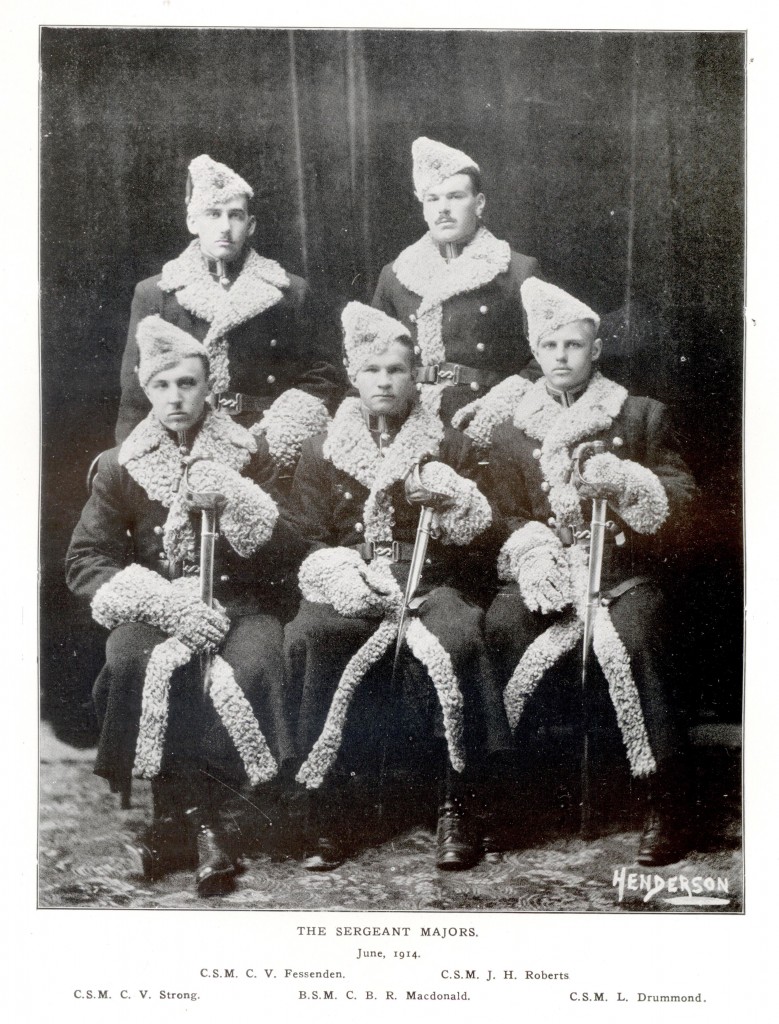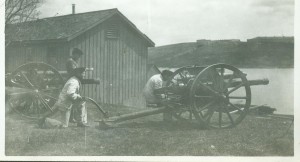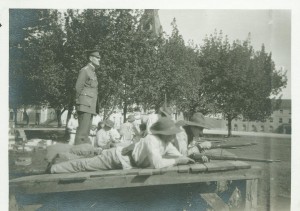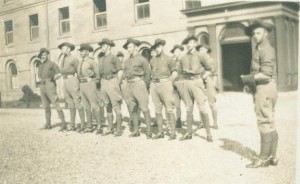
The following article describes the changes to the College during the Great War, starting with the ‘Diploma (Graduation) Day’ of the Class graduating on 24 Jun 1914.
***
THE GREAT WAR –
CHANGES WITHIN THE ROYAL MILITARY COLLEGE
When the Lieutenant-Governor of Ontario, Sir John Gibson, presided over the annual Diploma Day ceremonies on 24 June, 1914, 38 members of the Class of 1914 graduated. Four took Regular Commissions – one in the British Army, two in the Canadian Permanent Force, one in the Indian Army. It had been a special day, and the final event, the Graduation Ball was held the next day. Unknown to the happy graduates and the College staff, events in Europe would result in this being the last such event at RMC for several years.
On 28 June the Archduke Franz Ferdinand, heir to the throne of the Austro-Hungarian Empire, was assassinated in Sarajevo. Not everyone noticed, but by 4 August a complicated system of alliances resulted in the British Government declaring war on Germany. Canada, as the senior self-governing Dominion within the Empire was automatically at war. When the new RMC Senior Class arrived back in September, life was not quite the same as it had been when they had gone to summer training in Militia camps. Four of the British officers on the Staff, on leave in England at the outbreak of war, had been recalled by their units; a fifth was ordered home from Canada, and finally the Commandant, Colonel L.R. Carleton, DSO, was recalled by the War Office. The future of the College was uncertain.
MORE…
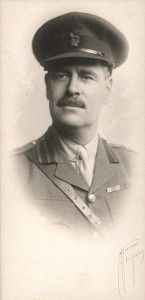 In Carleton’s place, Major C.N. Perreau, the Staff Adjutant (now called Director of Cadets) since 1911, was appointed Acting Commandant. The Canadian Government was convinced that the College would have to close if Perreau left, and although there was no formal plan regarding the wartime role of RMC, it was decided to keep it open. Perreau kept the appointment of Staff Adjutant until 1916 when he was confirmed as Commandant in the rank of Colonel; he then arranged that Major H.C. Wotherspoon of the 46th Durham Regiment (a Canadian Militia unit of Port Hope, Ontario) become the Staff Adjutant.
In Carleton’s place, Major C.N. Perreau, the Staff Adjutant (now called Director of Cadets) since 1911, was appointed Acting Commandant. The Canadian Government was convinced that the College would have to close if Perreau left, and although there was no formal plan regarding the wartime role of RMC, it was decided to keep it open. Perreau kept the appointment of Staff Adjutant until 1916 when he was confirmed as Commandant in the rank of Colonel; he then arranged that Major H.C. Wotherspoon of the 46th Durham Regiment (a Canadian Militia unit of Port Hope, Ontario) become the Staff Adjutant.
Having solved the problem of command, the next question was what to do with the Gentlemen Cadets as the Staff, both military and civilian, was significantly smaller; many Staff, fearing the war might ‘end by Christmas’, had rushed to serve. Despite the uncertainty, another 54 recruits arrived at the College in the late summer of 1914; amongst the Gentlemen Cadets already at the College, some sought early commissions, others decided to withdraw from the College so they could enlist in the ranks and go overseas with the new Canadian Expeditionary Force (CEF). Of the Class of 1914, six more took up commissions in the British Army, 18 more went overseas with units of the CEF. Colonel Perreau was to see three further groups leave by the end of 1914, primarily from the Classes which had joined in 1912 and 1913.
As the war continued past Christmas, Ex-Cadets, both young and old, continued to join, serving ‘for the Empire’ – of the originals, No. 4 Davis raised the 54th Battalion CEF (Kootenay Regt) and then the 2nd Pioneer Regt CEF, taking the latter to the UK in 1915; he died of injuries in 1918. Of the young, five who graduated in 1915 took commissions in the Indian Army to serve in Egypt and Waziristan, in Burma and Aden, and on the Western Front – two were wounded, one was awarded a Military Cross and Bar, one earned a Mention-in-Despatches, but each was representative of their group.
The RMC Advisory Board published a Report in the Sessional Papers of the Dominion of Canada in 1917 which noted that:
“ the total number of Gentlemen Cadets who have been granted Commissions in the Imperial Army, the Canadian Permanent Force or the Overseas Contingent(since the outbreak of war – explanation added) is one hundred and ninety, leaving eighty-seven Cadets still at the College on February 1, 1916, all of whom, so far as can be ascertained, intend to take Commissions when they are qualified to do so.”
The Report continues:
“ The record of the College in the war is a magnificent one, and it is a source of mingled pride and sorrow that of the number who have gone on active service, thirty-six have been killed on the field of honour up to May 26, 1916. “
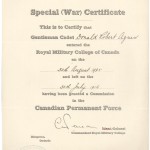 In the rush to find officers for wartime service, 130 of the 190 Gentlemen cadets referred to above had been commissioned under a new principle that a year of RMC service was sufficient grounding to gain a Special (War) Certificate (photo left – click on photo for better viewing) and then to become an officer in the Canadian Permanent Force. That experiment was not repeated after 1916. What developed, however, was a maximum two-year programme, with a modified peacetime curriculum, catering for two entries a year of younger men. On becoming 18 years of age, Gentlemen Cadets could go into an Army Class for more military training before commissioning. To support these requirements, the Director of Studies, Professor Iva Martin developed a new syllabus in 1916, changing the entrance requirements and enhancing the academic side of the Cadet programme – interesting, in a time of war.
In the rush to find officers for wartime service, 130 of the 190 Gentlemen cadets referred to above had been commissioned under a new principle that a year of RMC service was sufficient grounding to gain a Special (War) Certificate (photo left – click on photo for better viewing) and then to become an officer in the Canadian Permanent Force. That experiment was not repeated after 1916. What developed, however, was a maximum two-year programme, with a modified peacetime curriculum, catering for two entries a year of younger men. On becoming 18 years of age, Gentlemen Cadets could go into an Army Class for more military training before commissioning. To support these requirements, the Director of Studies, Professor Iva Martin developed a new syllabus in 1916, changing the entrance requirements and enhancing the academic side of the Cadet programme – interesting, in a time of war.
From those living Ex-Cadets who had attended the College since 1876, over 980 served in some capacity during the war, not all in uniform as some were in ‘protected occupations’ – 390 served in the Imperial Forces, (35 of whom were in the Indian Army), in campaigns around the world. Three were members of ‘the Old Eighteen:’ No. 4 Davis, No. 10 Denison, and No. 13 Perry.
RMC graduates also served in the air. Some 78 left the ground war for service with the Royal Flying Corps (RFC); the most famous was No. 943 W.A. (Billy) Bishop, VC (originally a member of the Class of which had joined in 1911, he withdrew from the College in September, 1914).
There is no record of Ex-Cadets transferring from the Army to the Navy, although there is mention in The Stone Frigate, 1914, the Journal of that Class, of “frantic appeals from the Business Manager, (No. 904 B.D. Rogers), then on a submarine (emphasis added) to the Editor-in-Chief elicited the reply that he (No. 903 H.S. Mathews) had gone to the front.” Most of the young Canadian Naval officers came from the Royal Naval College of Canada (RNCC) whose Staff and Cadets were housed at RMC after destruction of their shore establishment in the 1917 Halifax Explosion – they eventually moved from RMC to Victoria later in 1918.
In 1918 the focus at the College changed from preparing officers for service overseas to what should happen after the war. The Advisory Board had earlier recommended a change to a four-year academic programme, delayed because of the war; it was introduced by the next Commandant, No. 151 Major General Sir Archibald Macdonell who arrived early in 1919. One hundred and fourteen Recruits entered in 1918; in 1919, the number dropped to 46, as classes returned to pre-war numbers – in 1911 the number of Recruits had been 42.
1918 was a special year as well for Colonel Perreau who was given the rank of Temporary Brigadier-General, and decorated for his service by being appointed a Companion of the Order of St. Michael and St. George (CMG). He had served the Royal Military College well when no-one else knew what to do – he was the last British Commandant, and his departure in 1919 represented the end of an era.
e-Veritas appreciates the research and submission by 3572 Major-General (ret) Frank Norman
Photos provided by: Ross McKenzie & Lena Beliveau


